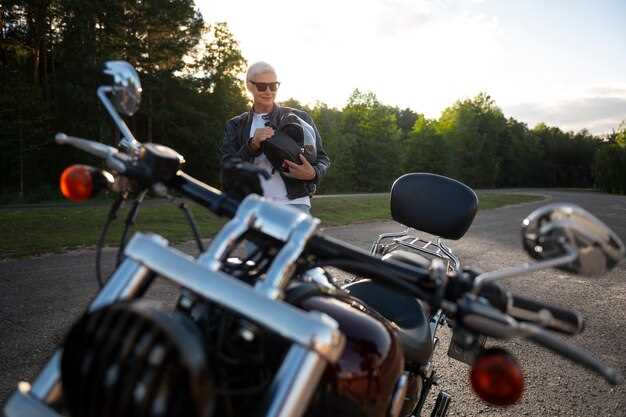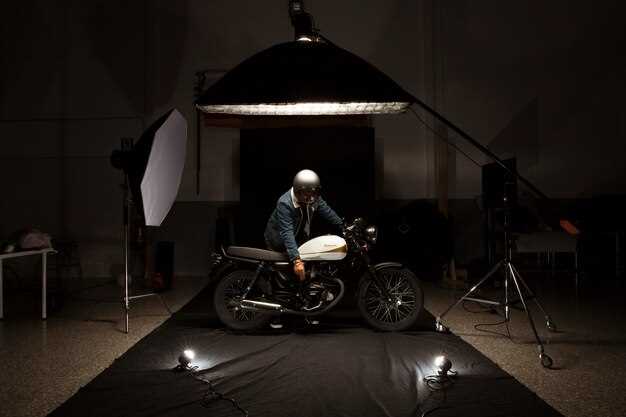
The relationship between movies and biker culture is a powerful and multifaceted phenomenon that has transcended mere entertainment. Films portraying motorcycle life have not only captured the essence of freedom and rebellion but have also shaped public perception of the biker community. From the iconic imagery of leather jackets and roaring engines to the profound themes of camaraderie and individuality, these cinematic depictions have left an indelible mark on the culture.
As the motorcycle enthusiasts flock to theaters, films often serve as a reflective mirror of the biker lifestyle. The portrayal of riders, their struggles, and their passions resonates with both seasoned riders and those outside the community. Movies like “Easy Rider” and “The Wild One” not only showcased the thrill of the open road but also highlighted issues such as societal norms, freedom of choice, and the quest for identity–elements that are deeply woven into the fabric of motorcycle culture.
Moreover, the impact of films extends beyond the screen, fostering a sense of belonging among bikers. They bring together individuals with shared interests and values, creating a vibrant community united by a passion for motorcycles. Through organized rides, events inspired by cinematic releases, and online discussions, the influence of movies cultivates a supportive environment where bikers can celebrate their love for riding and connect with others, reinforcing the importance of community in the motorcycle world.
How Iconic Biker Films Shape Perceptions of Riding

Iconic biker films have played a pivotal role in shaping societal perceptions of motorcycle culture and the act of riding itself. Movies such as “Easy Rider,” “The Wild One,” and “Mad Max” have not only entertained audiences but have also defined the rebellious spirit associated with bikers. These films portray a lifestyle that emphasizes freedom, adventure, and a sense of community among riders.
Through their narratives, biker movies often depict characters that embody the ideal of the free-spirited rider. This characterization influences public perception, leading many to associate motorcycle riding with a sense of independence and personal expression. The imagery of long open roads, the roar of engines, and the camaraderie among fellow bikers contribute to a romanticized view of riding that resonates with many aspiring bikers.
Additionally, these films often highlight the conflicts and challenges faced by bikers, such as societal rejection or law enforcement encounters. These conflicts can create a perception of bikers as outsiders, which can be both attractive and intimidating to those outside the community. This duality adds depth to the biker image, compelling audiences to explore the complexities of motorcycle culture.
The influence of biker movies extends beyond individual perception; it also impacts community dynamics. Fans of these films often form motorcycle groups inspired by the lifestyles depicted on screen. These clubs foster a sense of belonging and identity for riders, imbuing the culture with camaraderie and shared experiences that echo the themes of the films.
Moreover, the visual aesthetics of biker films have inspired fashion trends, motorcycle design, and even riding gear, further embedding their influence into the culture. Classic leather jackets, bandanas, and customized motorcycles have become symbols of biker identity, rooted in the imagery portrayed on screen.
In conclusion, iconic biker films shape perceptions of riding in profound ways. They encapsulate the allure of freedom, the challenges of the biker lifestyle, and the sense of community that bikers cherish. As these movies continue to be celebrated and analyzed, their impact on both individual and collective perceptions of motorcycle culture remains undeniable.
The Role of Cinematic Storytelling in Building Biker Brotherhood
Cinematic storytelling plays a pivotal role in shaping the perception and identity of the biker community. Through powerful narratives and compelling characters, films create a shared mythology that resonates deeply with bikers. These stories often depict themes of freedom, rebellion, and camaraderie, highlighting the emotional landscapes that define the biker lifestyle.
Films serve as a medium of influence, introducing audiences to the values and philosophies of the biker community. Classics like “Easy Rider” not only entertain but also articulate the struggles and triumphs of those who embrace the open road. Such portrayals foster a sense of belonging among viewers, encouraging them to identify with the men and women who navigate life’s challenges on two wheels.
Moreover, the visual language of cinema amplifies the romanticism associated with motorcycle culture. The thrill of riding, the allure of the open highway, and the bonds formed during long journeys are intimately captured on screen. This portrayal nurtures a sense of brotherhood among bikers, as they see their own experiences reflected in the characters and narratives presented in films.
Beyond mere representation, cinematic projects often spark real-world conversations and connections within the biking community. Film screenings, motorcycle meet-ups, and themed events arise as a direct result of the influence of these stories. This phenomenon reinforces the notion that bikers are not just individuals on a journey but part of a larger, interconnected brotherhood.
In summary, cinematic storytelling serves as an influential catalyst in building and sustaining biker brotherhood. Through engaging narratives and shared experiences, films bridge gaps and foster connections, ensuring that the spirit of the biker community thrives both on and off the screen.
Influence of Motorcycle Movies on Modern Riding Trends and Style

Motorcycle movies have significantly shaped riding trends and styles throughout the years. Films such as “Easy Rider,” “The Wild One,” and “On Any Sunday” have not only entertained audiences but have also inspired a generation of riders to adopt specific lifestyles and aesthetic choices associated with motorcycle culture.
One of the most notable influences of these movies is the promotion of the cruiser motorcycle as a symbol of freedom and rebellion. The iconic images of bikers cruising along open roads in these films have led many to seek out cruiser models for their own adventures. This shift in consumer preference has prompted manufacturers to design more models that resonate with the aesthetic and ethos portrayed in these cinematic classics.
Furthermore, the fashion associated with motorcycle films has had a lasting impact on modern riding gear. Leather jackets, helmets, and specific riding boots featured in movies have become staples in the wardrobes of riders worldwide. This has not only influenced personal style but also sparked various trends, such as the rise of custom gear and personalized motorcycle aesthetics.
Another aspect worth noting is the emphasis on camaraderie and community depicted in motorcycle films. These movies often highlight the bond shared among riders, promoting a sense of belonging that has become vital to the motorcycle culture. Today’s motorcycle clubs reflect this influence, fostering inclusivity and encouraging new riders to join the ranks of the community.
Additionally, the portrayal of the motorcycle lifestyle in films has sparked interest in adventure riding and long-distance touring. Modern riders are increasingly drawn to the idea of exploring diverse terrains, fueled by the adventurous narratives seen on screen. This has led to a rise in adventure bikes and a growing focus on dual-sport riding.
In summary, motorcycle movies wield considerable influence over modern riding trends and style. They not only shape consumer behavior and riding gear choices but also enhance the sense of community among bikers. As such, the impact of these films continues to resonate, inspiring both seasoned riders and newcomers to embrace the spirit of the open road.












